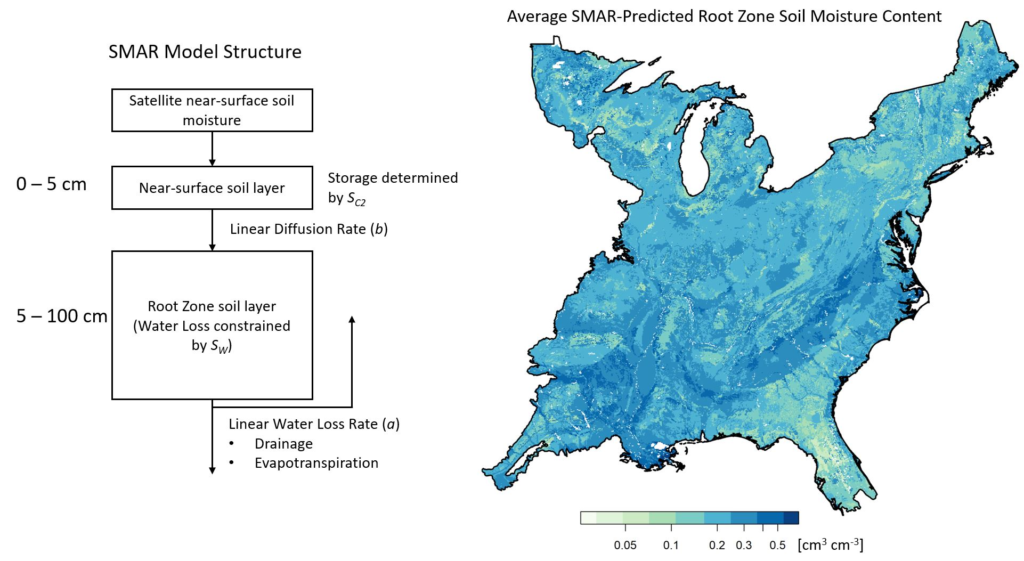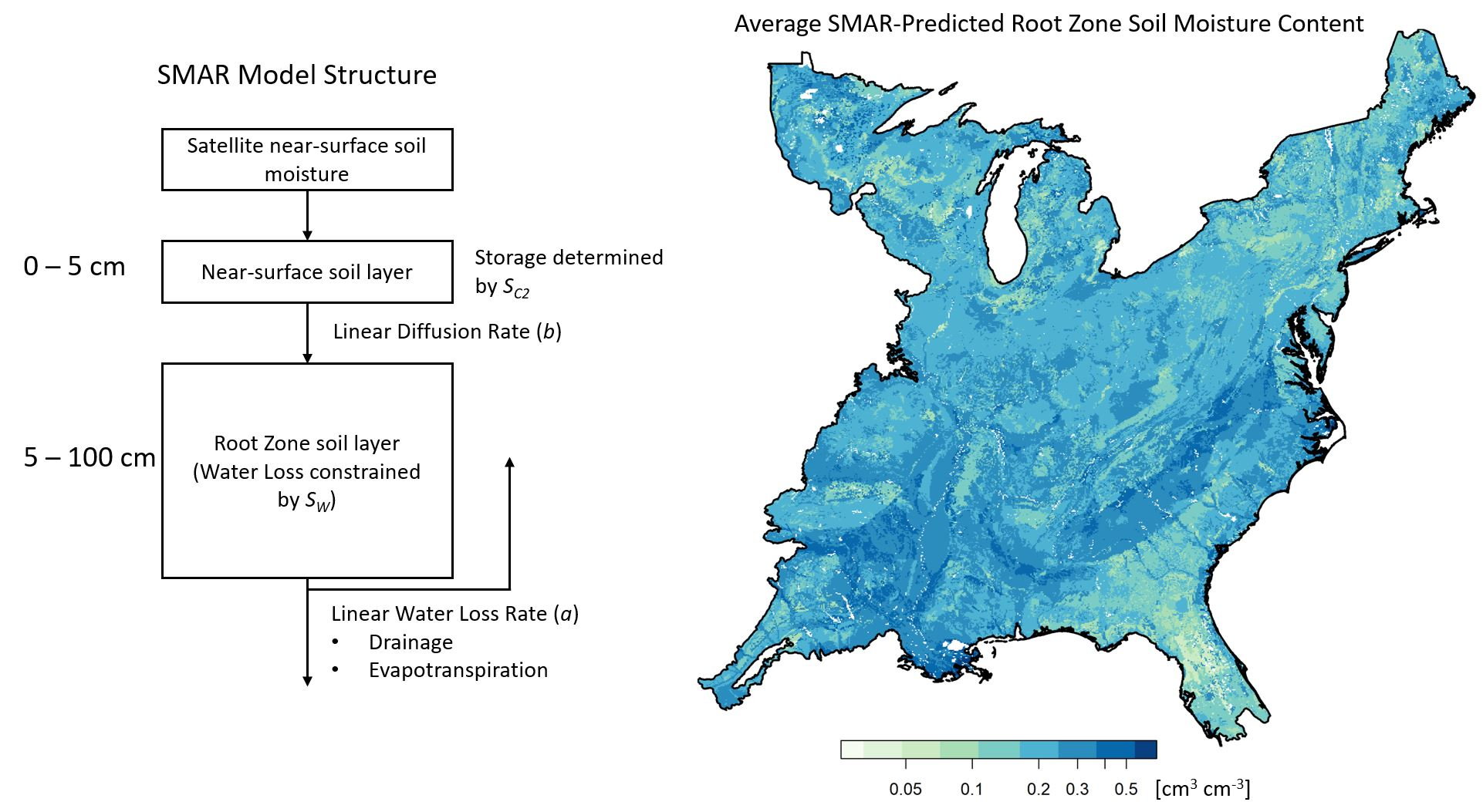Root zone soil moisture (RZSM) affects many natural processes and is an important component of environmental modeling, but it is expensive and challenging to monitor for relatively small spatial extents. Satellite datasets offer ample spatial coverage of near-surface (0-2 cm) soil moisture content at up to a daily time-step, but satellite-derived data products are currently too coarse in spatial resolution to use directly for many environmental applications, such as those for small catchments. This study investigates using passive microwave satellite soil moisture data products in a simple hydrologic model to provide root zone soil moisture estimates across a small catchment over a 2 year time-scale and the Eastern U.S. (EUS) at a 1 km resolution over a decadal time-scale. The physically based Soil Moisture Analytical Relationship (SMAR) is calibrated and tested with the Advanced Microwave Scanning Radiometer (AMSRE), Soil Moisture Ocean Salinity (SMOS), and Soil Moisture Active Passive (SMAP) data products. The SMAR spatial model relies on maps of soil physical properties and is first tested at the Shale Hills experimental catchment in central Pennsylvania. The model meets a root mean square error (RMSE) benchmark of 0.06 cm3 cm-3 at 66% of the locations throughout the catchment. Then, the SMAR spatial model is calibrated at up to 68 sites (SCAN and AMERIFLUX network sites) that monitor soil moisture across the EUS region, and maps of SMAR parameters are generated for each satellite data product. The average RMSE for RZSM estimates from each satellite data product is < 0.06 cm3 cm-3. Lastly, the 1 km EUS regional RZSM maps are tested with data from Shale Hills, which was set aside for validating the regional SMAR, and the RMSE between the RZSM predictions and the catchment average is 0.042 cm3 cm-3. This study offers a promising approach for generating long time-series of regional RZSM maps with the same resolution of soil property maps.

How to cite: Baldwin, D., S. Manfreda, H. Lin, and E.A.H. Smithwick, Estimating root zone soil moisture across the Eastern United States with passive microwave satellite data and a simple hydrologic model, Remote Sensing, 11, 2013, 2019. [pdf]

